Brick tile for the bathroom: what happens and how to choose?
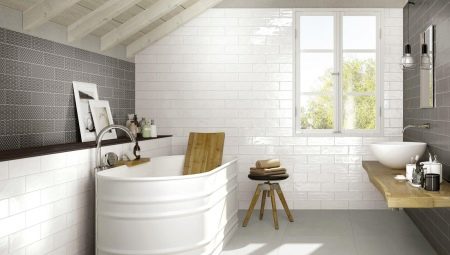
Today, a large number of tile options are used to decorate the bathroom, among which it is worth highlighting the beautiful and practical design in the form of bricks. Such solutions will be suitable for most bathrooms, but the use of brick-like tiles in the design is not without its own nuances.
Peculiarities
Among the large number of demanded solutions, with the help of which it will be possible to complete the interior decoration of the bathroom, it is worth highlighting the tiles for the brick. A feature of such products is considered versatility regarding compatibility with various stylistic solutions in terms of design.
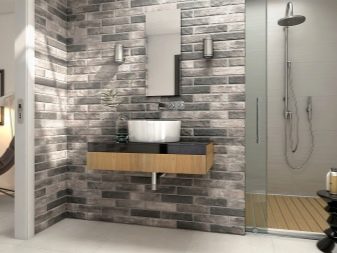

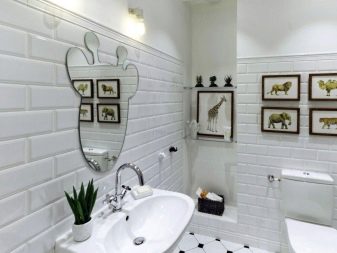
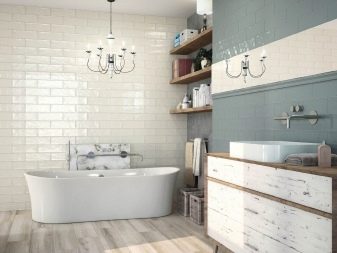
Today, products imitating this kind of finish are presented in a wide variety of colors, therefore brick surfaces can be combined with other finishing materials suitable for bathrooms.
Brick tile is notable for its clear geometric pattern, ease of installation, which makes it possible to use this option for decorating bathrooms, different in size, separate and combined rooms.
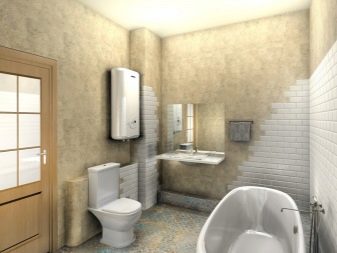
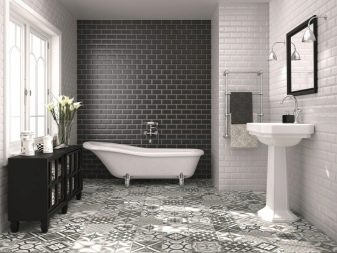
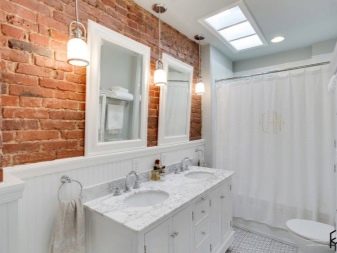
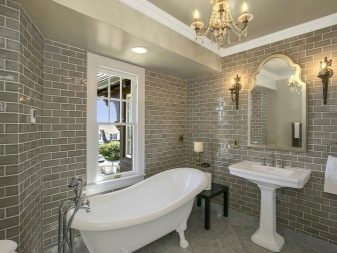
Among the many remarkable features of this finishing material, it is worth highlighting a huge selection of different surface options for such products that can repeat brickwork, in the light of which it is worth noting the unifying advantages of finishing materials of this category for all.
- By using this option, you can provide the room with an aesthetic and attractive appearance.This is due to the presence of strict lines in the decoration in any color scheme, regardless of how the elements will be laid on the surface of the walls, floor or ceiling.
- Most of the products will have a minimum weight, which greatly facilitates the subsequent laying of the material.
- The design will not be the only advantage of the tile imitating brickwork. In addition, this kind of finish will have a long service life.
- It will be easy to maintain the tiles during the operation of the bathroom.
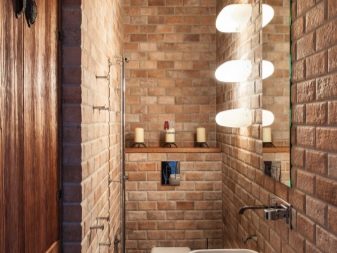
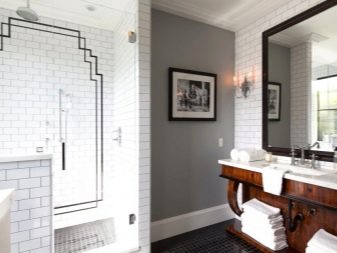
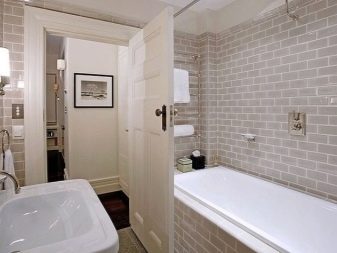

Views
According to their purpose, finishing products are classified into several categories:
- wall tiles;
- products for laying on the floor.
These products may have the same design, but the recommended flooring products are usually larger in size.
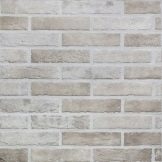

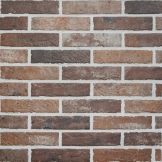

And also facing products can vary, taking into account the appearance. Today manufacturers offer consumers two types of products:
- full imitation of brickwork - when the elements look like one independent brick;
- products that repeat the appearance of several rows of masonry of this kind.
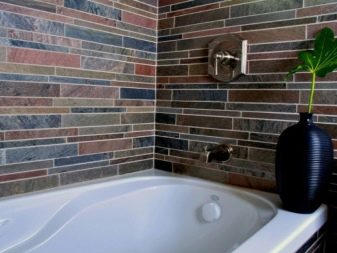
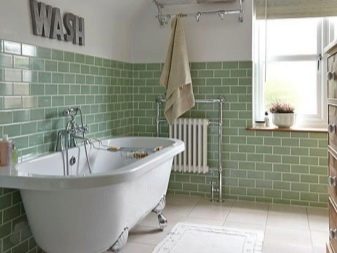
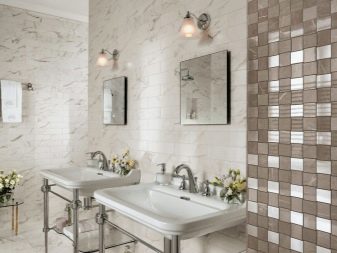
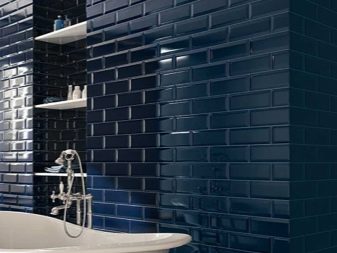
It will also be possible to classify the tiles by the type of material used for their manufacture. Today, bathroom products are made from various raw materials.
- Ceramics. Quite a popular variety, popular due to the small mass of the product, which allows it to decorate walls with a minimum thickness. Brick look ceramic tiles can be used to create simple and complex surface compositions.
Among the disadvantages of such products, it is worth highlighting its fragility.
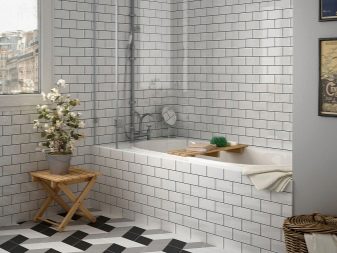

- Clinker tiles. A universal option that can also be used for interior cladding of surfaces in residential premises. The tile is remarkable for its durability, resistance to mechanical damage and aggressive environments.
The surface of the product can be smooth or embossed.
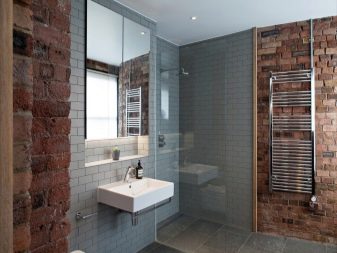


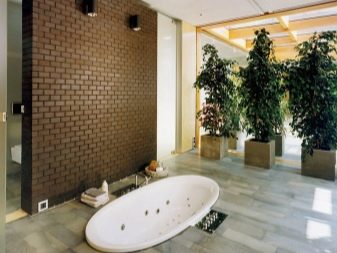
- Plaster products. The main advantage of such cladding products is considered abrasion resistance, affordable cost. However, gypsum tends to be saturated with moisture, therefore, on surfaces that will constantly be in contact with water, such an imitation will require additional coating with a specialized water-repellent compound.

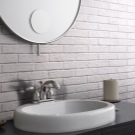
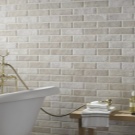
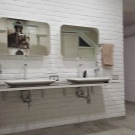
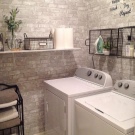

- Glass products... Bathroom brick tiles made of glass are expensive cladding products, thanks to which it will be possible to create an interesting and exclusive design in the room.
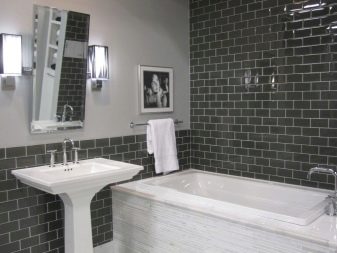
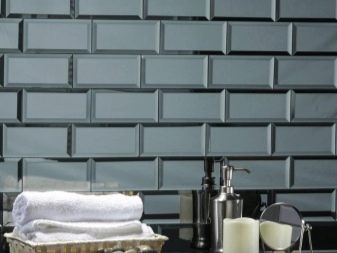
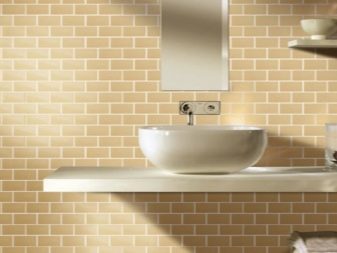

- Plastic tiles. Imitation of brickwork can be made from small panels made of polyvinyl chloride. This option is notable for its color variety, the raw materials are distinguished by their resistance to aggressive environments, the products do not exert additional stress on the walls and ceiling.
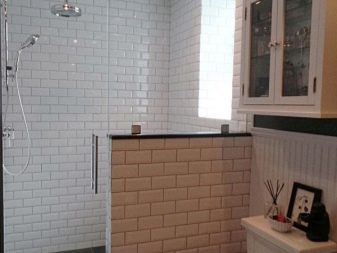
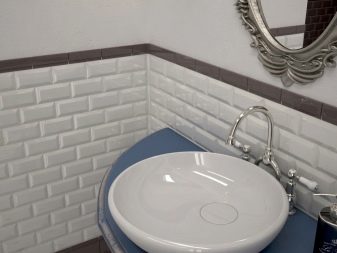

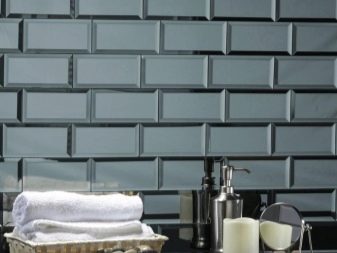
Colors and designs
The most popular are the following colors and shades of bathroom tiles, imitating brickwork:
- brown shade, which has the most identical color with natural brick;
- red brown;
- white tiles;
- beige;
- black;
- gray and others.
However, in addition to the most popular options for shades of products, in bathrooms, tiles are very often laid in shades that are non-standard for real brick. It can be blue, green, lilac colors.
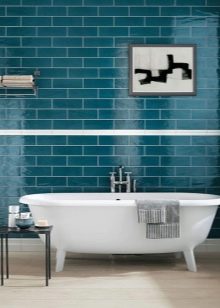
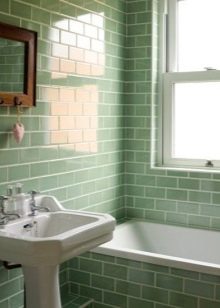

Brick-like tiles can be used in various stylistic solutions for interior decoration. Classic brown and red options will be appropriate in style bathrooms modern, provence, eco. For modern rooms in high-tech or loft style, gray products are usually purchased; glass varieties of brick-like tiles can be used.
The Scandinavian style assumes decoration in gray or other cold colors, classic bathrooms can be decorated with white products with imitation of brickwork.

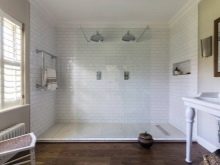
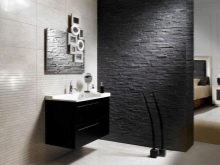
Styling options
To beautifully decorate a bathroom with brick-like tiles, work should be started with preparatory measures. They involve leveling the surface on which the facing material will be laid. The tiles can be laid on the selected surfaces in different ways, depending on personal taste, as well as the general stylistic concept.
Most often imitating elements horizontally attached, which is considered a classic styling option. However, walls and other surfaces of the bathroom can be laid out with such material. upright.

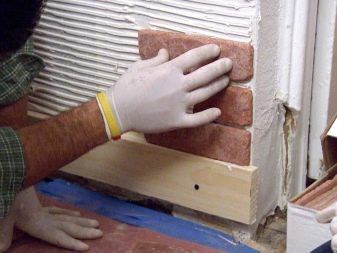
And also an equally popular solution is partial decoration with tiles, when a certain pattern is laid out on the wall, floor or ceiling, the joints of the walls between themselves, between the wall and the floor or the ceiling can be decorated with tiles.
A popular option is also considered curly laying of brick tiles around furniture in the room, along the contour of the mirror, along the side of the bath. From such materials in the room it will be possible to create a kind of working apron, it can start from the floor or, conversely, from the ceiling to the middle of the wall.
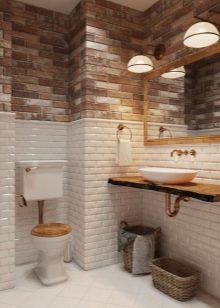
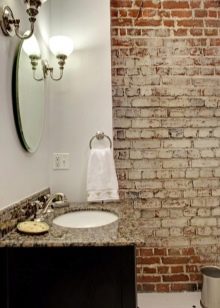
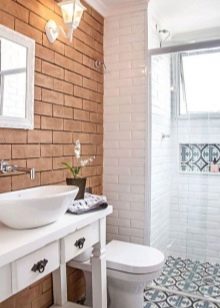
Selection Tips
Setting the goal of decorating a bathroom in this version, an important value, in addition to detailed design planning, will be a competent selection of the main facing material. The main recommendations regarding the design and selection of raw materials are presented below.
- Despite the versatility of brick tiles, when choosing a suitable variety, it is worth considering the dimensions of the room. For cramped rooms, you should not consider options for a complete finish of all surfaces in the bathroom. Since narrow rooms will become even smaller from this, which will create an oppressive atmosphere in the room.
- A good solution would be zoning the room with brick tiles. You can use combined surface finishes or variations of color contrasts of the same tiles, which will have a positive effect on the attractiveness of the interior.
- To create an ornament on a surface allows you to transform the bathroom, making the design in the room unique, while the materials for the cladding do not have to be expensive.
- As for the selection of a suitable material, then considering the varieties of tiles, it is worth focusing on such characteristics of raw materials as moisture resistance, weight and abrasion resistance. If the above parameters of the purchased material are low, it will not be possible to avoid the rapid appearance of mold or mildew on the surface. In addition, from frequent contact, tiles with a low degree of abrasion will quickly lose their original attractiveness.
- To create a truly unique indoor environment, it is recommended to consider options for glass raw materials, thanks to which it will be possible to visually expand the space of the bathroom, as well as make it unique.
- An important factor in the selection will be competent choice of tile colors. Designers recommend giving preference to light shades from a pastel palette. This is due to the practical component of such a cladding, on which traces of water stone, splashes of water will not be so noticeable, which will greatly facilitate the subsequent care of the bathroom.
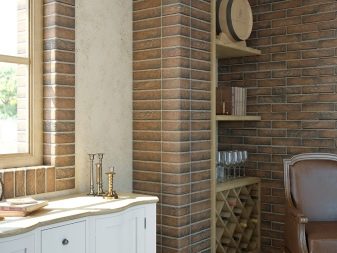
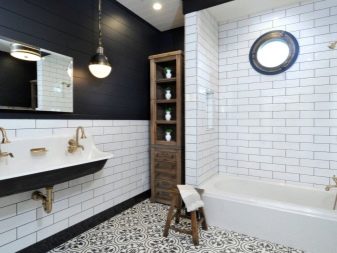
Interesting examples
Partially tiling a white bathroom with imitation brick tiles will help dilute light palette, making the room memorable and modern in terms of design.
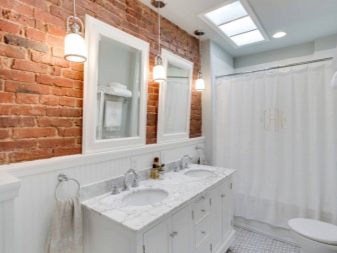
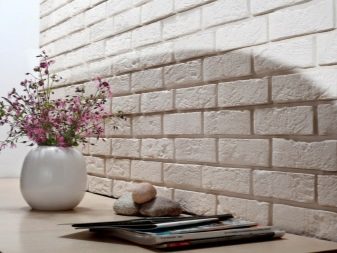
Gray color scheme brick-like tiles will add additional luxury to the classic interior, thereby making the room cozy and functional, if you decorate a work apron on half of the wall with such material.
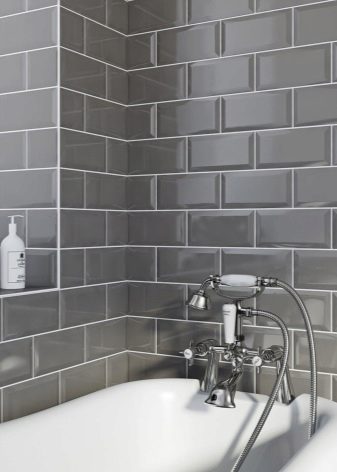
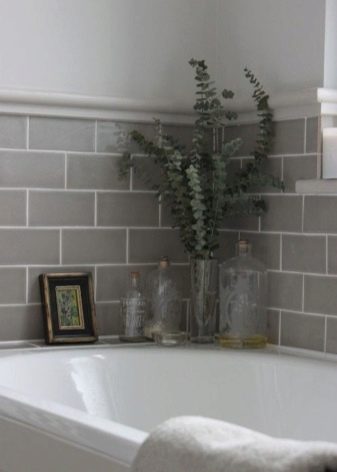
Black and white combination will be a winning solution for bathtubs where brick-like tiles will prevail.Thanks to the glossy surfaces, it will be possible to create a pleasant atmosphere in the room, conducive to a pleasant and relaxing pastime.
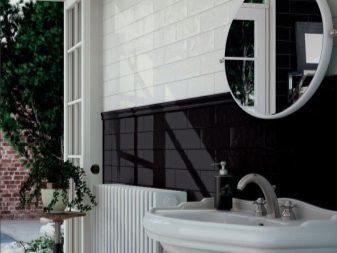
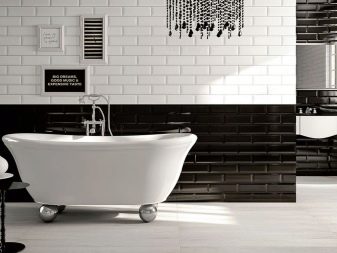
For more information on decorative brick tiles, see the video.








